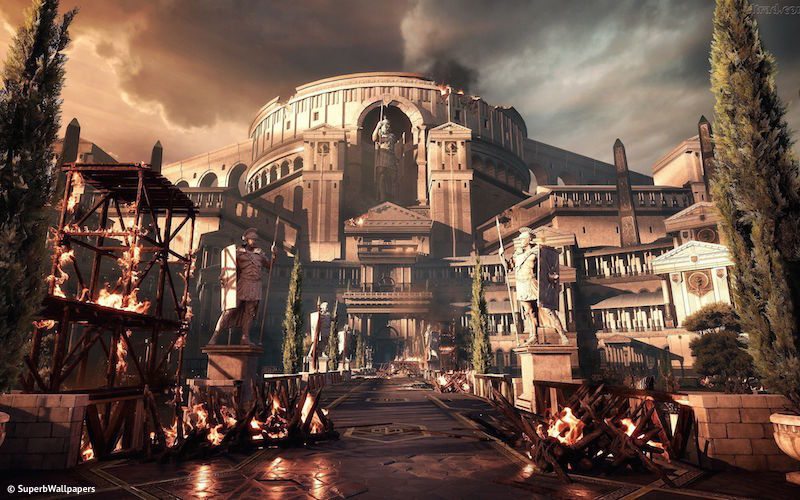Ancient Rome, 753 B.C. – 476 A.D.
The Roman Empire started as just a small town on the Tiber River in Italy, and in its heyday, it included most of Europe, Britain, western Asia, northern Africa, and the Mediterranean islands. The Romance languages are still in use today, including Italian, French, Spanish, Portuguese, and Romanian, and they are all derived from Latin. Ancient Rome was the largest city in the known world at the time, with an estimated population of over one million people.
Roman gods are fairly well-known as well (even the planets are named after them), and the Romans were a religious people who involved their gods in their daily lives. They even considered the emperor a god. Each god had a separate temple and a separate holiday where the citizens would visit that temple and make sacrifices in the god’s name. Each home also had a small altar or shrine.
The Romans are also famous for their public baths. Although most houses had water piped into the house, they were taxed according to their size, so most houses had relatively small pipes. This meant that they could not actually run their own private bath in most cases, so they went to the public bath to get clean. The baths featured hot and cold water, and the largest even had exercise areas.
Heating water with a furnace is one of the many inventions attributed to the Roman Empire. The intricate pipe system itself, including the famous aqueducts, was also an amazing feat of engineering for the time. Romans also invented concrete, bound books, and newspapers.
Expand your knowledge universe in just 5 minutes a day via bite-sized email courses.
Share with friends:

